1876 Hans Bethge writer.
1875 Gertrude
Vanderbilt Whitney, US sculptor and arts patron who died on 18
April 1942.
1873 Hayyim Nahman Bialik Rädi Ukraine,
Hebrew poet/translator
1873 Blichfeldt,
mathematician.
1864 Steklov,
mathematician.
1860 François-Joseph Guiguet,
French artist who died on 03 September 1737.
1859 Frederik
Pijper Dutch vicar/church historian (The Monasteries)
1857
Henry B Fuller, US writer (Under the Skylights)
1856 Anton Askerc Slavic priest/poet (Primoz Trubar)
1856 Lizette Woodworth Reese, US poet (Branch of May, Tears)
1851 Luis Coloma Spanish jesuit/writer/theologian (Pequeñeces,
Boy)
1830 Arthur Johann Severin Nikutowski, German
artist who died on 14 February 1888.
1829 Thomas William Robertson
England, playwright (Caste)
1827 "Cénacle de Joseph Delorme",
créé par Sainte-Beuve et Hugo.
Ce
cénacle romantique est nommé en l’honneur du célèbre poème
de Sainte-Beuve dans lequel ce terme se trouve appliqué au groupe
d’amis et d’artistes qui, de 1827 à 1830 (à peu près du "manifeste"
de la préface de Cromwell à l’apothéose d’"Hernani"), furent au cœur
de la révolution romantique. Certes, Sainte-Beuve, qui entre en relation
avec Victor Hugo après un article extrêmement élogieux dans Le Globe
du 9 janvier 1827 sur le premier volume des Odes, y joue un rôle non
négligeable par l’œuvre de théoricien et de critique qu’il commence
à édifier comme par l’aide matérielle qu’il lui apporte en faisant
du Globe l’organe des théories nouvelles. Mais c’est bien Victor Hugo
qui constitue la figure maîtresse du Cénacle. Il a abandonné son appartement
de la rue de Vaugirard pour un autre plus spacieux, rue Notre-Dame-des-Champs;
Sainte-Beuve, si forte était alors l’amitié qui unissait les deux
hommes, emménage à quelques numéros de là. Les réunions, qui se tiennent
chez Hugo, dans le salon appelé "chambre au lys d’or" (la fleur poétique
gagnée à l’académie des jeux Floraux), rassemblent un nombre toujours
plus grand de sympathisants et d’amis. L’esprit qui animait ce groupe,
assez ouvert pour recueillir presque tout ce que le romantisme français
compta de gloires, et, fait nouveau dans l’histoire des lettres, les
musiciens et surtout les artistes s’y mêlaient de plus en plus nombreux
aux écrivains. Tous les arts cherchaient à communier dans une même
recherche. Jeunes rapins ou jeunes poètes, tous avaient le sentiment
exalté de vivre un tournant de l’histoire en se débarrassant des conventions
académiques et des vieux conformismes, pour inventer des formes résolument
modernes, laissant libre cours à l’imagination. Chacun lisait ses
œuvres, on se dispensait mutuellement encouragements et félicitations;
véritable "camaraderie littéraire", pour reprendre l’expression d’un
détracteur, Henri de Latouche.
Les plus célèbres des réunions du Cénacle furent les lectures des
pièces de Hugo, Marion Delorme (10 juillet 1829), alors appelée
Un duel sous Richelieu, où assistèrent notamment Balzac,
Eugène Delacroix, Vigny, Dumas, Musset, Sainte-Beuve, Villemain, Mérimée,
Armand et Édouard Bertin, Louis Boulanger, Frédéric Soulié, Taylor,
Soumet, Émile et Antony Deschamps, les frères Devéria, Charles Magnin,
Mme Belloc, Mme Tastu.
La lecture
d’Hernani (30 sept. 1829), véritable soirée historique, fut
le prélude à la bataille de la représentation du 25 février 1830 et
des suivantes; dans les semaines qui précédèrent cette bataille, gagnée
de haute lutte, la maison de Hugo ressemblait davantage à un quartier
général, où les combattants viennent prendre les instructions, qu’à
un salon littéraire.
Mais cette
même année 1830 marque la fin du Cénacle: jalousies et rivalités de
théâtre, répercussions de la révolution de 1830 qui désagrège et éparpille
le groupe suivant les prises de position des uns et des autres; refroidissement
certain dans les rapports entre Victor Hugo et Sainte-Beuve, dû autant
au malaise croissant du critique devant l’absence de mesure, d’équilibre
et de bon goût du génie hugolien qu’à l’attraction réciproque que
s’avouent Adèle Hugo et "Joseph Delorme", alias Sainte-Beuve (qui
deviendront d’ailleurs amants). Hugo lui-même éprouve le besoin d’une
plus grande solitude méditative et imaginaire (c’est l’heure des Feuilles
d’automne), et se sent peut-être las de jouer au général en chef
d’une armée littéraire. Dès l’été de 1830, il déménage et va s’installer
rue Jean-Goujon, dans un quartier lointain et alors peu fréquenté.
Les foyers du romantisme vont essaimer, se multiplier et se diversifier,
désormais chaque aventure sera menée en ordre dispersé, chaque exploit
deviendra plus solitaire. |
1823 Francisco Bilbao Barquín, político chileno.
1790 Per Daniel Amadeus Atterbom Swedish poet (Lycksalighetens)
1789 Louis Dupré, French artist
who died on 12 October 1837. — link
to an image.
1768 The modern circus is born.
Englishman Philip Astley stages the
first modern circus in London. Trick riders, acrobats, clowns, trained
animals, and other familiar components of the circus have existed
throughout recorded history, but it was not until the late 18th century
that the modern spectacle of the circus was born. Astley, a former
cavalry sergeant major, found that if he galloped in a tight circle,
centrifugal force allowed him to perform seemingly impossible feats
on a horse's back. He drew up a ring and on January 9, 1768, invited
the public to see him wave his sword in the air while he rode with
one foot on the saddle and one on the horse's head.
Astley's trick riding received such a favorable response that he soon
hired other equestrians, a clown, and musicians and in 1770 built
a roof over his ring and called the structure Astley's Amphitheatre.
In 1772, Astley went to Versailles to perform his "daring feats of
horsemanship" before King Louis XV, and he found France ripe for a
permanent show of its own, which he founded in 1782. Also in 1782,
a competitor in London set up shop just down the road from Astley's
Amphitheatre, calling his show the "Royal Circus," after the Roman
name for the circular theaters where chariot races were held. In the
19th century, the term "circus" was adopted as a generic name for
this new form of entertainment. Astley, who lived till 1814, eventually
established 18 other circuses in cities across Europe.
In 1792, English equestrian John Bill Ricketts opened the first American
circus in Philadelphia and later opened others in New York City and
Boston. President George Washington reportedly attended a Ricketts
circus and sold the company a horse. Smaller traveling circuses arose
in Europe in the early 19th century, visiting towns and cities that
lacked elaborate permanent shows. Larger traveling tent shows evolved
in the 1820s. In 1859, the Cirque Napoleon in Paris offered the first
"flying trapeze" act, which remains a popular component of the modern
circus.
In 1871, William Cameron
Coup and showman P.T. Barnum opened an enormous circus in Brooklyn
that they dubbed "The Greatest Show on Earth." Ten years later, Barnum
went into business with James Anthony Bailey; the "Barnum and Bailey"
circuses were so large they required simultaneous performances in
three rings.
In 1884, the five
Ringling brothers staged their first circus, and they soon were buying
out other circus companies, including Barnum and Bailey, which they
purchased in 1907. During the next three decades, the Ringling Brothers
and Barnum & Bailey Combined Shows grew into the largest touring organization
in the world, with hundreds of tents and an army of workers and performers.
The Ringling Brothers and Barnum & Bailey downsized after World War
II but continues to tour today. Canada's Cirque du Soleil, which gave
an artistic sensibility to its acrobatic acts while shunning the use
of animals, was an innovative circus development of the late 20th
century. |
1728 Thomas Warton, poet laureate of England (Pleasures
of Melancholy)
1671 Jean-Baptiste Vanmour, Flemish
artist who died on 22 January 1737.
1590 Simon Vouet,
French painter who died on 30 June 1649. — MORE
ON VOUET AT ART “4” JANUARY with
links to images.
1554 Gregory
XV [Alessandro Ludovisi], pope (1621-23) |
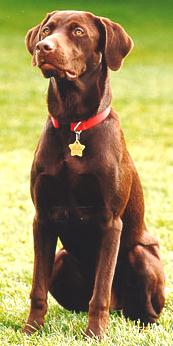 On
a January 09:
On
a January 09: 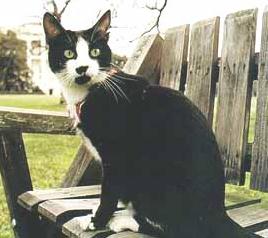 2001
As if the Middle East conflict wasn't enough. The news come out
that the Clintons' diplomacy has been unable to resolve a hostile confrontation
right inside the White House, ever since December 1997 when puppy chocolate
Labrador retriever Buddy [photo grown-up>] was given to Clinton
because “it's the president's desire to have one loyal friend in Washington.”
(said spokesman Mike McCurry at the time). This was greatly to the disgust
of First Democat Socks [< photo], then 6 years old, who had
moved into the White House at the same time as the Clintons. President Clinton
named Buddy after his great-uncle, Henry Oren ``Buddy'' Grisham, who had
died earlier in 1997.
2001
As if the Middle East conflict wasn't enough. The news come out
that the Clintons' diplomacy has been unable to resolve a hostile confrontation
right inside the White House, ever since December 1997 when puppy chocolate
Labrador retriever Buddy [photo grown-up>] was given to Clinton
because “it's the president's desire to have one loyal friend in Washington.”
(said spokesman Mike McCurry at the time). This was greatly to the disgust
of First Democat Socks [< photo], then 6 years old, who had
moved into the White House at the same time as the Clintons. President Clinton
named Buddy after his great-uncle, Henry Oren ``Buddy'' Grisham, who had
died earlier in 1997.  Sybil
(1973) by Flora Rheta Schreiber
Sybil
(1973) by Flora Rheta Schreiber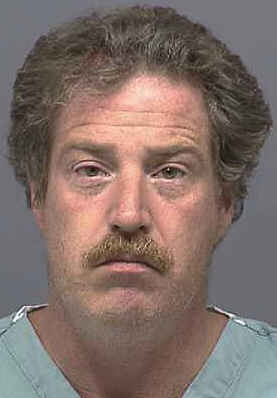
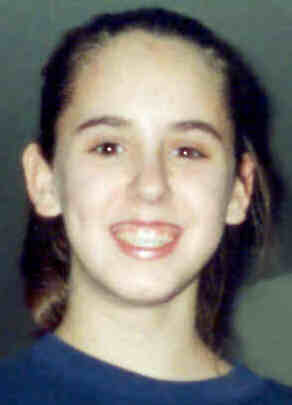
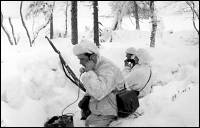 1940
Day 41 of Winter War: USSR aggression against Finland.
1940
Day 41 of Winter War: USSR aggression against Finland. 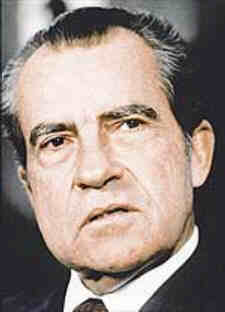 1925
Abdelhamid Benhadugah novelist.
1925
Abdelhamid Benhadugah novelist.